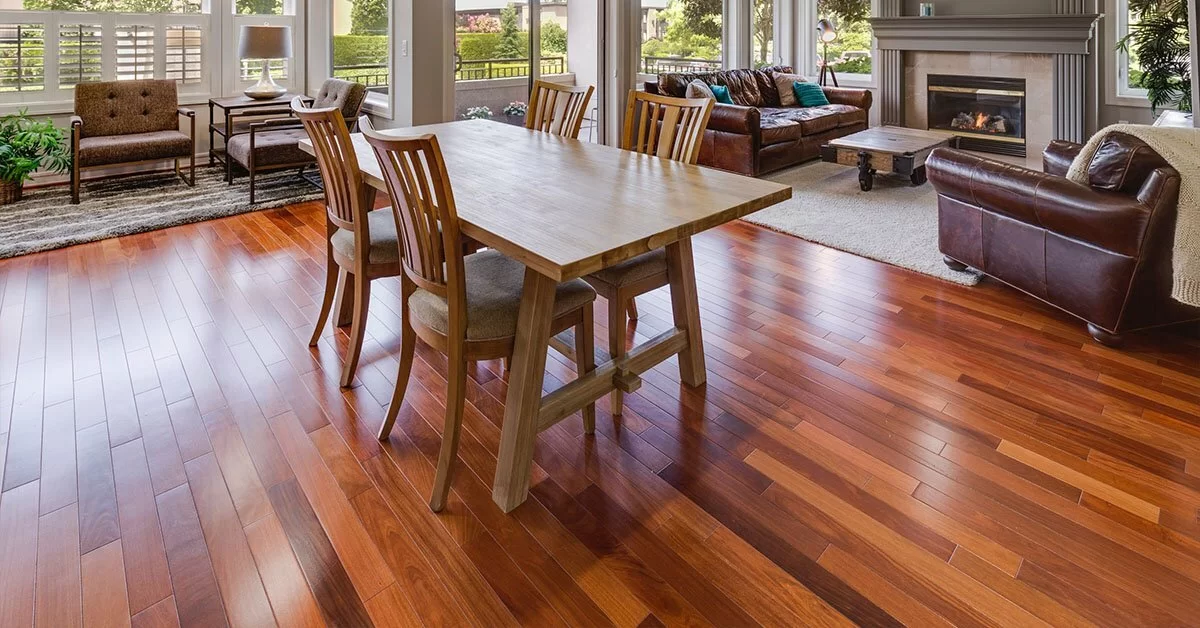
Parquet flooring has been a classic option for flooring for many years, and with good reason. Because of its unusual style and durability, it is a well-liked option for both residential and commercial spaces. Due to its intricate, geometric pattern consisting of interlocking hardwood pieces, parquet flooring has a classic and magnificent appearance. In this article, we’ll examine the benefits and adaptability of timber flooring Melbourne, specifically parquet flooring, as well as why it’s still a popular option for flooring today.
Durability
One of the main benefits of parquet flooring is how durable it is. The hardwood pieces interlock to provide a sturdy flooring surface that can withstand heavy foot activity, making it ideal for commercial settings. Parquet timber flooring can survive for decades with the proper maintenance and care because hardwood is known for its innate resistance to dents, scratches, and general wear and tear.
Optional Designs
Parquet flooring is available in a range of designs, from simple herringbone patterns to more complex ones like chevron, basket weave, and Versailles patterns. These design options enable both homeowners and designers to create unique, personalised flooring patterns that complement any kind of interior design. Parquet flooring can be used in a variety of contexts, including both traditional and modern ones, because of its versatility.
Sustainability
Another benefit of parquet flooring is its sustainability. As a renewable resource, hardwood can be removed and replanted without causing environmental damage. Many manufacturers of hardwood flooring also employ ecologically friendly production methods to reduce waste and its adverse environmental consequences. Parquet flooring offers homeowners a beautiful, enduring, and environmentally friendly flooring alternative.
Simple Maintenance
Parquet flooring is very easy to maintain, especially when compared to other flooring options like carpet or tile. Hardwood naturally resists stains and spills, making spill cleanup quick and easy without leaving a permanent stain. Refinishing hardwood floors can also add decades to their lifespan by removing flaws and restoring their original gloss.
All About Parquet Production
The creation of parquet flooring tiles is a multi-step process that starts with raw materials and ends with the finished result. An overview of the parquet flooring tile manufacturing process is provided below.
1. Wood Harvesting and Milling
Before making parquet flooring tiles, the wood must be collected and milled. The three types of wood that are most usually used for parquet flooring are oak, maple, and walnut. Following that, the log-made boards are kiln-dried to remove moisture and improve their stability. The boards will next be divided into blocks or strips of uniform size, which will be utilised to create the parquet tiles.
2. Pressing and Glueing the Blocks
The parquet tiles must next be made by glueing the blocks together. The blocks are placed in a specified pattern, such as herringbone or chevron, and then glued together using a premium adhesive. The tiles are then placed into a press where they are heated and crushed, creating a strong bond between the blocks.
3. Tile Finishing and Sanding
The tiles are sanded to provide an even surface after they have been bonded and pressed. Any extra glue or flaws in the wood are eliminated during the sanding process. After sanding, the tiles are coated with a lacquer or oil finish that gives the wood a lovely, polished appearance while also serving to protect it from deterioration.
4. The Tiles’ Packaging and Shipping
The tiles are sanded, finished, quality-checked, and then packaged for transportation. To ensure their safety during shipping, the tiles are often packaged in boxes or pallets. They can be installed after they get there using a number of methods, such as glue-down, nail-down, or floating installation.
Where to Install Parquet Floors
A timeless and adaptable flooring solution, parquet floors can be used in a variety of settings. They are a well-liked option for both residential and commercial areas because of their strength, distinctive style, and simplicity of upkeep. The following are some typical locations for installing parquet floors:
1. Living Rooms
Parquet flooring can enhance the warmth and elegance of living spaces, resulting in a pleasant and welcoming ambience.
2. Dining Rooms
The distinctive pattern of parquet flooring can offer a beautiful backdrop for dining rooms, giving them a posh and elegant appearance.
3. Bedrooms
Parquet flooring in bedrooms can add a touch of comfort and luxury, fostering a tranquil and restful atmosphere.
4. Hallways
Parquet flooring in hallways can provide a smooth transition between rooms and give the entire house a uniform appearance.
5. Foyers and Entryways
Parquet flooring may create a warm and attractive entrance to the home in foyers and entryways, making a fantastic first impression.
6. Commercial Spaces
Parquet flooring is a fashionable and hard-wearing flooring solution that can sustain high foot traffic and can be used in commercial spaces like hotels, restaurants, and offices.
Conclusion
In many civilisations all throughout the world, parquet flooring has been a popular and functional flooring choice for ages. It is a well-liked option for both residential and commercial areas because of its distinctive style, toughness, and simplicity of maintenance. Any area benefits from parquet flooring’s warmth, elegance, and sophistication, and there are countless design options thanks to the variety of patterns and colours available. Parquet flooring will definitely improve the appearance and atmosphere of your area, whether you want a traditional herringbone pattern or a contemporary chevron design.
